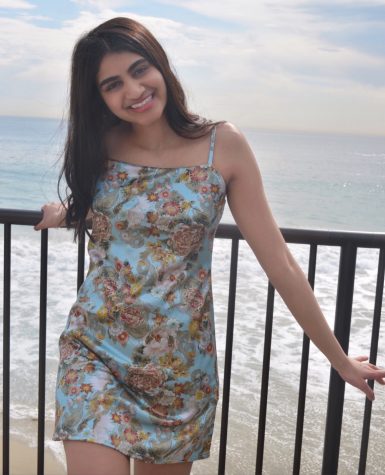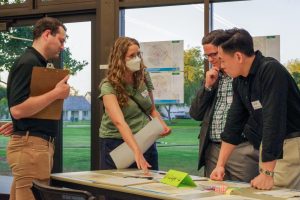Celebrating National Hitchcock Day
March 16, 2021
I still remember the first time I watched an Alfred Hitchcock film. I was in sixth grade, fresh out of graduation and at a sleepover with my best friend. We wanted to watch a horror film but still wanted to sleep at night, so anything gory or violent was completely out of question. That’s when my dad suggested “The Birds.” I laughed in his face. Two minutes in, I was hooked.
I don’t think I had ever seen anything like it at the time. The horror I was familiar with always had to do with exorcism, lots of prosthetic makeup and one very scary nun. But to make a movie about crows and still scare the hell out of you— that’s something only Hitchcock could do.
And it wasn’t just the visual elegance, the characteristic irony or the powerful symbolism that made it addicting. It was the way he communicated with the audience, the way he flirted and teased them. He made you believe one thing and did something else entirely. The anticipation, combined with a touch of irony made the movie come to life in a way most contemporary films struggle to achieve. In one of my favorite TV series, “Alfred Hitchcock Presents,” he speaks directly to the audience throughout the episode. Philosopher Gilles Deleuze called this interaction between the artist and his public the “mental image.” Hitchcok utilized this time and time again. Movies like “Psycho,” for example, thrive on the suspense created by the dramatic irony of the audience knowing something the characters do not.
Then, there was the element of visual storytelling. Horror is a genre made by utilizing senses such as sight and sound, which amplify the fear of an audience. Scary images combined with a thrilling backtrack and dialogue is what drives the film forward. Unlike most directors, Hitchcock started off as a silent film director, which bolstered his innovative thinking and ability to work out of the box. He was always finding ways to visually appease the audience without relying too heavily on dialogue as compared to other conventional horror films, which became a crutch for most filmmakers of the time.
One of my personal favorite elements of a Hitchcock film is the music. While most modern-day filmmakers don’t use music to its full extent, Hitchcock took advantage of what it can offer. He was meticulous about the tracks he used, wielding them to create worlds of emotion. Music itself functions at the level of a character in Hitchcock films, being used to heighten tension, increase the impact of a climax, or create a tone of his choosing. Bernard Herrmann, Academy Award-winning composer, collaborated with Hitchcock on seven of his films. His work included an ominous two-note motif in “Vertigo,” the screeching violins of a string orchestra in “Psycho” featured during the shower scene, and much more. Although their collaboration ended in a creative dispute, Herrman played a huge role in using music to signify plot twists and convey suspense in Hitchcock’s movies.
But none of this would be possible without Hitchcock’s amazing scriptwriting, which emphasized psychological characterization. In films such as “Shadow of a Doubt” and “Rebecca,” Hitchcock uses voiceovers to create a mysterious and suspenseful tone, and prolongs that throughout the entirety of the film. But voiceovers, as can be seen with many modern-day films, can become boring or cringey sometimes. The show-not-tell element of writing is vital in films: When a narrator says too much, it can pluck you out of the world of the film and spoil the immersive experience. But Hitchcock didn’t succumb to this. His perfect balance of narration and dialogue ensured that the audience stayed captivated throughout.
There is so much to say about Alfred Hitchcock as a creative figure that just a couple paragraphs doesn’t cut it. But the best way to experience these attributes is to see it for yourself. So this National Hitchcock Day on March 12th, turn on the TV, grab a bag of popcorn and get watching; there are 53 Hitchcock films to go!
























































